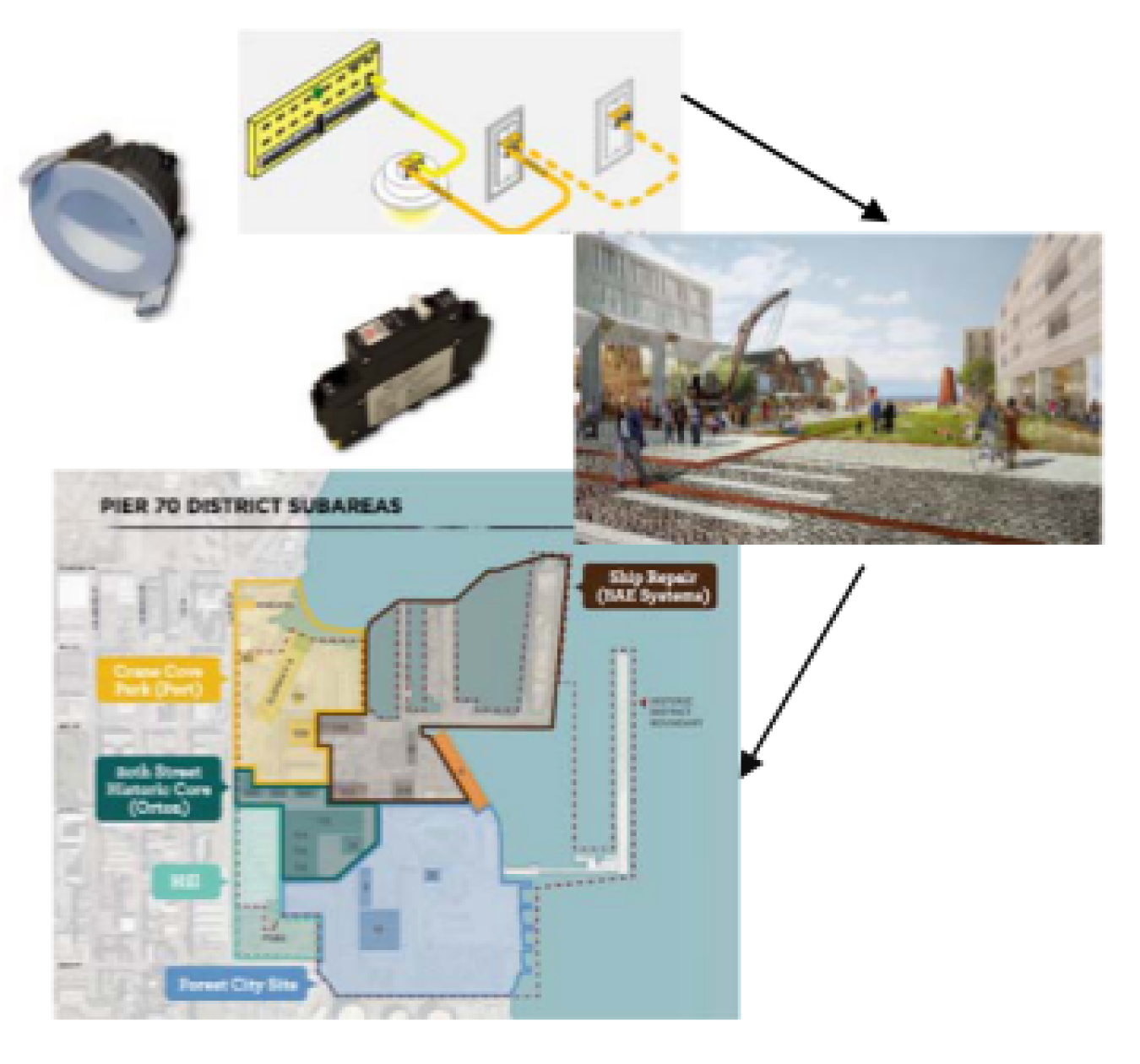Lead Performer: Lawrence Berkeley National Laboratory – Berkeley, CA
April 25, 2017
US Pilot: Pier 70, San Francisco. Image courtesy of CERC team.
Lead Performer: Lawrence Berkeley National Laboratory – Berkeley, CA
Partners:
-- Vicor – Andover, MA
-- Cisco Systems – San Jose, CA
-- Legrand – West Hartford, CT
-- University of South Florida – Tampa, FL
-- Forest City — Cleveland, OH
-- Walt Disney Imagineering – Glendale, CA
-- Nextek Power Systems — Detroit, MI
-- NextEnergy — Detroit, MI
-- Lumen Cache — Indianapolis, IN
-- Saint-Gobain – Shanghai, China
-- Tsinghua University – Beijing, China
-- Xiamen University – Xiamen, China
-- Beijing University of Civil Engineering and Architecture – Beijing, China
-- Shenzhen Institute for Building Research – Shenzhen, China
-- Zhuhai Xingye Green Construction Technology Co., Ltd. – Zhuhai Shi, China
Project Term: April 1, 2016 – March 31, 2021
PROJECT OBJECTIVE
The U.S.-China Clean Energy Research Center (CERC) is a pioneering research and development (R&D) consortium bringing together governments, key policymakers, researchers, and industry to develop a long-term platform for sustainable U.S.-China joint R&D. Current hybrid buildings with on-site generation and/or storage require many energy conversions. Typically, about one third of the building’s total energy load runs on direct current (DC), such as electronics, lighting, variable speed motors, etc., and the fraction is growing. Eliminating conversions from DC to alternating current (AC) saves 10-20 percent in electricity consumption. Furthermore, DC has other advantages for power quality and reliability, so future buildings may use a balance of both AC and DC. China’s conditions are amenable to development and demonstration of DC building systems. The area is also new and emerging in the United States. Many of the technologies required for DC buildings already exist, but the energy-savings potential is not well-understood. Once savings are verified, control strategies need to be developed and applied to optimize the savings in buildings, integrating various renewable, distributed energy, and end-use technologies.
The objective of this project is to demonstrate the technical viability of direct DC distribution in buildings, and evaluate its potential energy saving and other non-energy costs and benefits (capital cost reduction, renewable energy integration, reliability, resilience, power quality, etc.). The project also looks to enhance DC building benefits through communication and control, using low (<600 V) voltage DC directly integrated with renewable energy technologies and storage in buildings to achieve energy efficiency improvement and peak demand shift.
PROJECT IMPACT
By providing a research platform for testing, demonstration, and installation of all electric appliances of DC buildings, this project has an energy savings potential of 0.7-3.8 Quads by 2025.
CONTACTS
DOE Technology Manager: Marina Sofos
Lead Performer: Wei Feng and Bruce Nordman, Lawrence Berkeley National Laboratory

